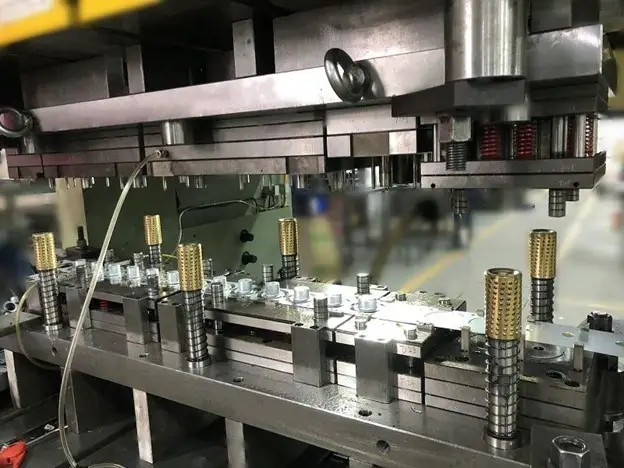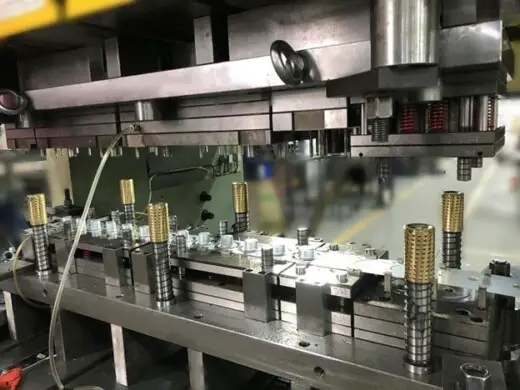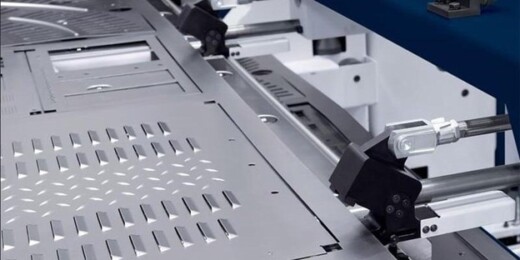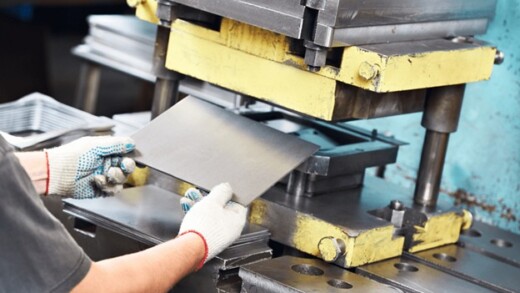The processes and techniques of sheet metal stamping, Levstal Group construction company
The Processes and Techniques of Sheet Metal Stamping
25 Mar 2023
The ever-evolving global markets have tremendously increased the urgency for quickly-produced large quantities of complex parts that are used in the manufacturing processes of a wide range of products. The technological advancements and the invention of machinery such as sheet metal stamping machines have proven to be critical virtually in every industry.
Today, manufacturing industries can meet the needs of the markets by accelerating the production processes by incorporating technologies such as sheet metal manufacturing.
Sheet metal stamping, also known as pressing, is a cold-forming process that uses force to permanently deform a flat sheet of metal into the desired shape. Sheet metal is placed into a stamping press where a specialized tool and die surface are pressed into or through the sheet metal to produce the net shape. The operation could be in a single stage where every stroke of the press produces the final shape of the metal part, or the sheet metal could go through a series of different stages to achieve the desired shape. Sheet metal stamping is a cold-forming process that does not require heat except for some specialized processes.
Sheet metal stamping processes
Any sheet metal stamping employs a number of operations to achieve a certain shape on a sheet of metal. These processes are made possible by different types of tools, dies, and machinery to achieve the final part. Stamping processes include:
Blanking
This is the most basic technique where the desired workpiece is cut out from the base metal sheet. The resulting piece, also known as a blank may be the final component (fully finished blank) or may undergo subsequent forming processes to produce the desired component/part. Blanking is often the first step in most sheet metal stamping processes.
Punching
Punching, sometimes referred to as piercing, works in a similar form as blanking. However, the operation removes a scrap piece from the workpiece/blank by applying shear force on the workpiece. The punch press drives the punch through the sheet into the die. A small clearance between the punch and the die causes the sheet to bend and fracture leaving holes and cutouts of specified shapes and sizes on the workpiece.
Embossing
Sheet metal embossing creates raised or sunken designs or relief on the sheet metal. This process may involve pressing the blank against matched male and female roller dies or passing the blank between rolls of desired patterns.
Coining
This is a high-precision stamping process and a bending technique in which a workpiece goes under high stress to induce plastic flow on the surface of the workpiece. Here, the workpiece goes between a die and the punch or press. The punch tip penetrates the metal resulting in accurate bends that conform to the die.
Bending
Sheet metal bending or press brake forming is a general stamping process where the workpiece is deformed into angular shapes such as L, V, or U shapes. Bending is done by applying force that exceeds the material’s yield strength to achieve plastic deformation. However, the force should not be great enough to break the material.
During bending, the workpiece will naturally spring back after the load is lifted. As such, the material is bent beyond the required angle so that it takes the wanted shape after springback.the die.
Types of metal stamping techniques
Sheet metal stamping in medium or high volume productions is often completed through two common stamping techniques; Progressive die stamping and transfer die stamping. These techniques are suitable for forming both simple and complex parts. However, choosing a particular technique depends on the unique requirements of the application.
Progressive die stamping
Progressive die stamping uses tooling called progressive die to carry out simultaneous operations on sheet metal. The process incorporates multiple stamping stations where a combined set of necessary tools performs one or more different operations on the workpiece as it moves across the individual stations. The operations carried out at each successive station add to the work of the previous station.
The stamping press moves up to open the die. The metal then moves through the die, where each stroke performs a specific operation. The operations may include coining, bending, cutting, embossing, or punching. Each movement and alignment in this process must be precise since the entire process is connected.
Once the sheet metal has gone through each station, the final part is cut out from the metal strip and separated from the die.
Transfer die stamping
In transfer die stamping, rather than feeding the metal part through a series of stamping stations, the metal part is free from the metal strip early on and moved to the next station by a mechanical transport system. Transfer die stamping is used where the metal part has to be free from the strip to allow free-state operations. Transfer die stamping is ideal for large parts that often require transfer to different presses.
Transfer die stamping may include a single die, several dies, or an array of machines arranged to form a complete production line.
The transfer press process begins with a blank cut at the first station. The blank is then transferred mechanically or manually to successive forming stations where different operations such as chamfering, coining, bending, or cutting are done.
Application of sheet metal stamping
Sheet metal stamping is vital for virtually every industry today. From its application in making cans for the food industry to the making of components for the defense industry, metal stamping ensures efficiency, accuracy, and consistency in the manufacturing processes.
Some of the industries that employ sheet metal stamping include and are not limited to:
Automotive industry
More than 40% of automobile parts require metal stamping. This makes stamping one of the major production processes vital for the production of both structural and covering parts that maintain the shape of automobiles.
The automotive industry employs metal stamping to produce panels which include:
- External skin panels such as; side panels, decklids, roofs, bonnets, doors, and fenders.
- Internal mating panels such as; bonnet inners, decklid inners, and door inners.
- Dimensionally complex panels such as; floor pans and dash panels.
Aerospace projects
Aerospace components must be manufactured to extremely tight tolerance and precision across the board in terms of production. This makes metal stamping critical for the production of small parts like connectors or large parts like airframe components.
Metals stamped components can be found all over aircraft. Some of the common stamped parts in aerospace include:
- Wing flaps
- Bay doors
- Slats
- Spoilers
Medical machinery
Metal stamping plays a huge role in the production of a wide range of precision and high-quality components for medical and healthcare equipment such as:
- Oxygen tank subcomponents
- Pumps component
- Surgical tools and instruments
- Implantable components
- Enclosures for medical devices
Conclusion
Sheet metal stamping has improved production processes in many sectors. As the technology evolves, sheet metal stamping can be applied in the production of even more complex components. Stamping allows for low-cost high-volume production of identical parts making the production seamless. Stamping machines are relatively easy to automate and can allow for the incorporation of high-end computer-controlled programs that provide precision and quick production processes.
Today, there are many stamping companies that not only produce large-scale components and parts for big industries but also for small individual projects.
Comments on this Processes and Techniques of Sheet Metal Stamping article are welcome.
Architecture
Edinburgh Futures Institute Building
Comments / photos for the Processes and Techniques of Sheet Metal Stamping page welcome



